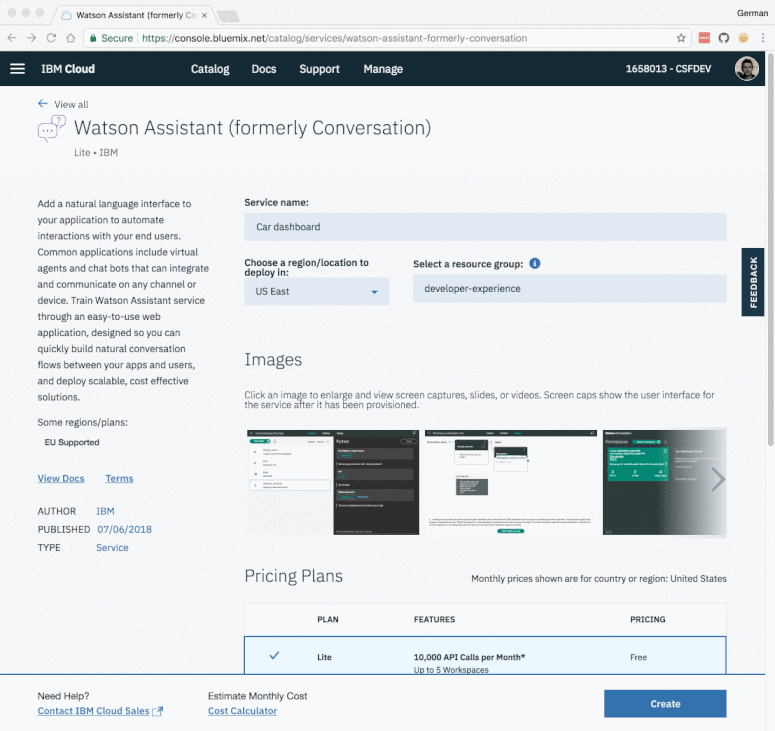This Node.js app demonstrates the Watson Assistant service in a simple chat interface simulating a cognitive car dashboard.
You can view a demo of this app.
- Sign up for an IBM Cloud account.
- Download the IBM Cloud CLI.
- Create an instance of the Watson Assistant service and get your credentials:
- Go to the Watson Assistant page in the IBM Cloud Catalog.
- Log in to your IBM Cloud account.
- Click Create.
- Click Show to view the service credentials.
- Copy the
apikeyvalue, or copy theusernameandpasswordvalues if your service instance doesn't provide anapikey. - Copy the
urlvalue.
-
In your IBM Cloud console, open the Watson Assistant service instance
-
Click the Import workspace icon in the Watson Assistant service tool. Specify the location of the workspace JSON file in your local copy of the app project:
<project_root>/training/car_workspace.json -
Select Everything (Intents, Entities, and Dialog) and then click Import. The car dashboard workspace is created.
-
Click the menu icon in the upper-right corner of the workspace tile, and then select View details.
-
In the application folder, copy the .env.example file and create a file called .env
cp .env.example .env -
Open the .env file and add the service credentials that you obtained in the previous step.
Example .env file that configures the
apikeyandurlfor a Watson Assistant service instance hosted in the US East region:ASSISTANT_IAM_APIKEY=X4rbi8vwZmKpXfowaS3GAsA7vdy17Qh7km5D6EzKLHL2 ASSISTANT_URL=https://gateway-wdc.watsonplatform.net/assistant/api- If your service instance uses
usernameandpasswordcredentials, add theASSISTANT_USERNAMEandASSISTANT_PASSWORDvariables to the .env file.
Example .env file that configures the
username,password, andurlfor a Watson Assistant service instance hosted in the US South region:ASSISTANT_USERNAME=522be-7b41-ab44-dec3-g1eab2ha73c6 ASSISTANT_PASSWORD=A4Z5BdGENrwu8 ASSISTANT_URL=https://gateway.watsonplatform.net/assistant/api - If your service instance uses
-
Add the
WORKSPACE_IDto the previous propertiesWORKSPACE_ID=522be-7b41-ab44-dec3-g1eab2ha73c6
-
Install the dependencies
npm install -
Run the application
npm start -
View the application in a browser at
localhost:3000
-
Login to IBM Cloud with the IBM Cloud CLI
ibmcloud login -
Target a Cloud Foundry organization and space.
ibmcloud target --cf -
Edit the manifest.yml file. Change the name field to something unique.
For example,- name: my-app-name. -
Deploy the application
ibmcloud app push -
View the application online at the app URL.
For example: https://my-app-name.mybluemix.net
This sample code is licensed under Apache 2.0.
Full license text is available in LICENSE.
See CONTRIBUTING.
Find more open source projects on the IBM Github Page.


